Bumblebees are hard to miss with their furry, bright bodies landing on flowers and humming through the grass. These backyard buddies are responsible for a considerable amount of pollination, making them essential to our long-term survival. But how long does a single bumblebee live?
How long do bumblebees live? Bumblebees live an average of four weeks; however, the queen bee will live up to a full year. The lifespan of a bumblebee is heavily dependent on its role in the colony and the species of bumblebee. Where queens will live an entire cycle (one year), worker bees won’t survive longer than 12 weeks.
In this article, we’ll cover everything from why bumblebees are important and the life cycle of a bumblebee to how long each colony member can expect to live. We’ll also cover factors that might be cutting the life expectancy of the bumblebee.
What Factors Impact The Bumblebee Lifespan?
A number of things, such as habitat loss, disease, the use of pesticides, and climate change, pose a threat to bumblebee populations. The yearly colonies of bumblebees are smaller than those of honeybees, which have large perpetual hives. Let’s take a closer look at these factors:
- The growing use of pesticides, such as a class of insecticides called neonicotinoids, is one of the main factors contributing to bumblebee decreases. Due to the presence of this pesticide in pollen and nectar, bumblebees are constantly exposed to small levels while foraging and consuming flowers. The effects of this pesticide on the body’s ability to think clearly, stay oriented, and navigate are cumulative.
- Wild bumblebee populations are severely impacted by habitat degradation. For bumblebees to build territories, nesting areas must be accessible.
- Viruses, fungus, and bacteria are only a few of the pathogens that harm bumblebees and reduce colony productivity. For a large number of wild bumblebees, parasitic illnesses are also a common part of life.
Lifespan of a Bumblebee
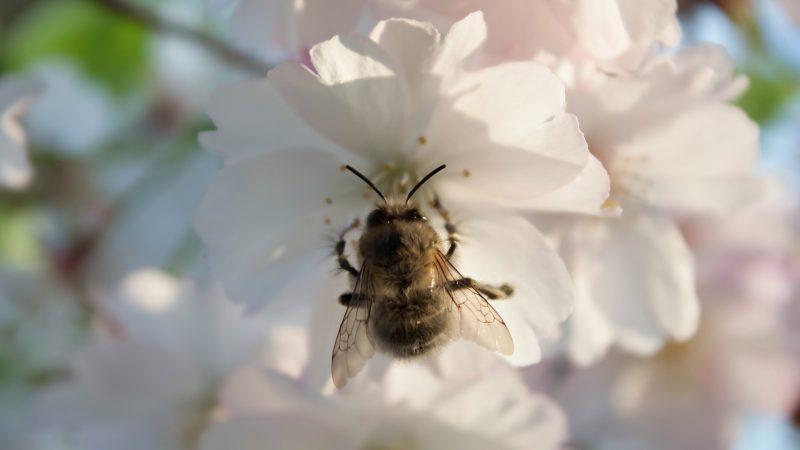
Bumblebees live in highly organized social structures within their colony, which go through a predictable cycle each year. Their roles and sex are a big determiner of how long they will live. However, in general, the average bumblebee should live around one month.
Let’s take a closer look at some different kinds of bumblebees and how their roles in the hive can affect their lifespan.
How Long Do Queen Bumblebees Live?
A single queen bee is the longest-reigning colony member and lives for an entire cycle: about one year.
The queen begins her life near the end of the summer and is born to start a brand new colony of her own. In the fall, she leaves the nest to mate, feed heavily, and look for a place to spend the winter.
Queens are the only members of the colony that ‘overwinter.’ They hide under dead trees, in the ground, and abandoned animal burrows for the cold season. When Spring arrives, it’s time for the queen to get to work on a whole new colony.
She lays the first batch of eggs – going out to find food for them herself, and keeping them warm with her body. In two weeks, the eggs hatch. The first larvae turn into foraging bees, who take over providing food for the colony while the queen focuses on egg-laying.
Eventually, new queens hatch in the late summer, the old queen dies, and the cycle repeats, with new queens setting out to start new hives.
How Long Do Worker Bees Live?
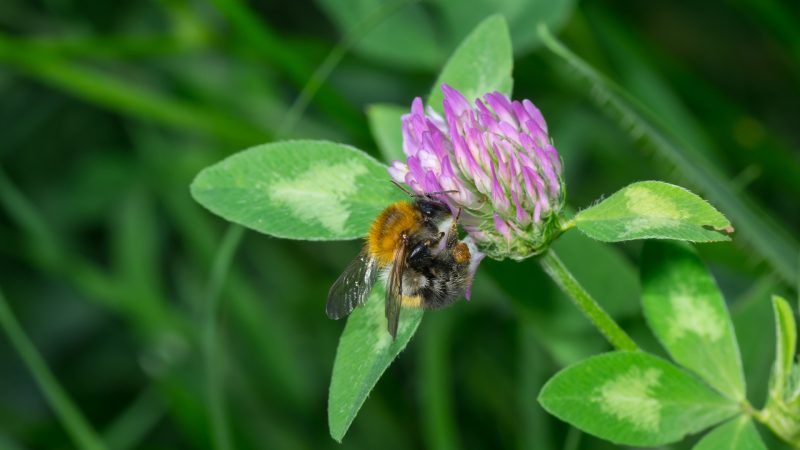
Worker bumblebees are exclusively female and spend the first four weeks as eggs and then larvae. They are the first colony members born in the Spring when the new queen wakes up from hibernation. Most of the bumblebees you see buzzing around pollinating are these female worker bees.
Among the worker bees, there are foragers and ’house bees.’ The foragers, very expectedly, gather nectar and pollen and bring them back to the colony. These tend to be the larger worker bees. House bees create honey, feed larvae, and defend the hive.
Though a bee may spend most of its life on a single task, each worker bee can do it all. If the needs of the colony change – they run low on food, have a surplus of food, or are under attack – the worker bee may change its role.
Foraging bees tend to have a shorter life span than their house bee counterparts. A forager bee lives an average of three weeks, and a house bee that spends all of its time in the hive, never turning into a forager, can live up to 12 weeks. This number varies between bumblebee species.
How Long Do Drone Bees Live?
Drones or male bees are the shortest-lived members of the hive. They are born at the same time as new queens but have no stingers and have only one purpose: to find and mate with a new queen.
The males swarm from the nest and fly far away – sometimes many miles – looking for a new queen from a different colony. Most males will not end up mating, and after about two weeks, they all die.
Where Do Bumblebees Live?
Much the same as other hive-like insects, bumblebees tend to look for sheltered, dark areas in which they may build their colonies. This could be underground, in an attic space, or even in tall, dense grass.
Do Bumblebees Live in Colonies?
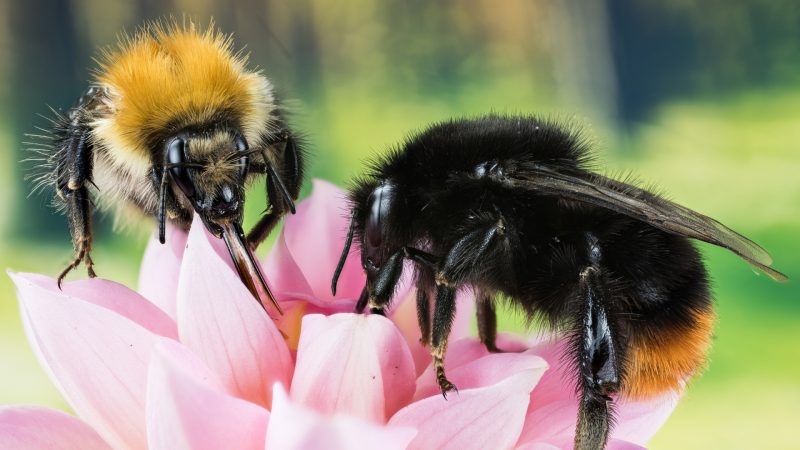
Bumblebees live in small colonies of a few hundred. A single bumblebee won’t last long on its own (unless it’s a queen getting ready to create a new colony), and it relies on other members of the hive for foraging and protection.
Each bee has a role to play in the colony, regardless of how short its lifespan is.
Do Honeybees and Bumblebees Live Together?
Bumblebees and honeybees are related but quite different creatures and never live in the same hive. Honeybees are extremely social – their colonies can be tens of thousands strong, and the whole colony lives through the winter. They usually make their hives at least nine feet (2.74 meters) above the ground, in hollows in trees, poles, and even walls.
Bumblebees also live together, but their colonies are usually just a few hundred and prefer to be closer to the ground in fallen trees and old animal burrows. As mentioned previously, the queen is the only bumblebee to survive the winter.
Are There Any Bumblebees That Live Alone?
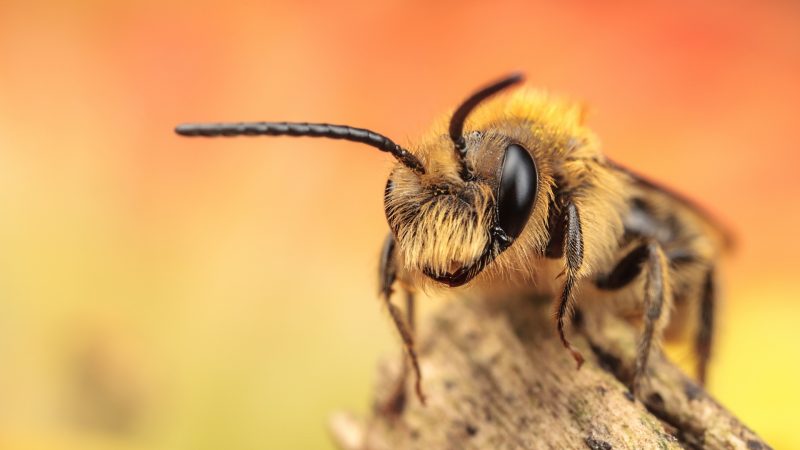
Though we usually picture bees living and working together, most species of bees live alone.
Bumblebees, however, only live together in colonies.
Solitary bees might live near other groups of bees but lay their eggs and supply their own food. Their proximity is usually just due to a particularly good habitat that other bees want to take advantage of too.
What Kind of Bumblebees Live In the Ground?
Most species of bumblebees live underground. Some, like the two-spotted bumblebee, the confusing bumblebee, and the half-black bumble bee, can also be found just above the surface or in hollow logs and trees. Many prefer to use old rodent dens and animal burrows, and all avoid intense, direct sunlight.
Bumblebee Life Cycle Facts
The life cycle and longevity of a single bumblebee depends on its sex and role in the colony, and all but the queen will die before winter. Unlike honeybees, the colony follows a strict, one-year cycle.
Life Cycle of a Bumblebee Colony
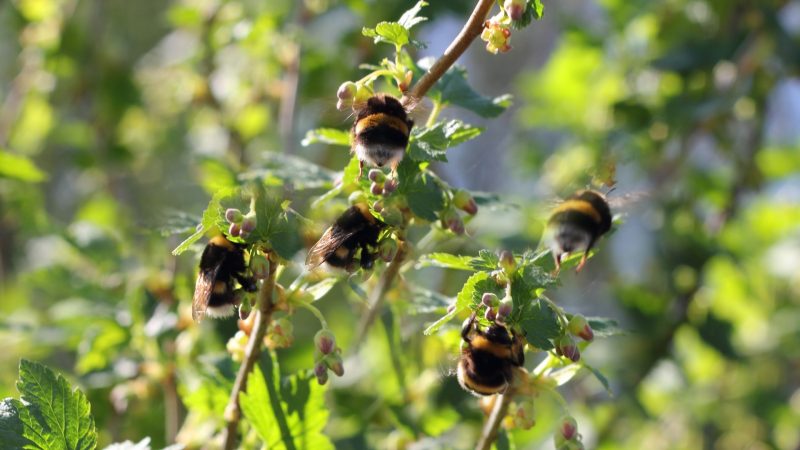
Egg
In the early spring, the queen comes out of her dormant state and looks for a suitable spot to start her colony. Her fertilized eggs from the previous year are then placed in wax cells that she has constructed. She rests on top of the eggs while shaking her flying wings to generate heat up to 30 degrees Celsius for incubation.
Larva
Larvae emerge from the eggs after around four days. The larvae resemble maggots a little bit at this stage. The larvae continue to eat and grow, passing through several developmental stages and losing their skin three times before pupating after around 14 days when they begin to spin silky cocoons.
Pupa
During transformation, the larvae shed their skin once more inside the pupae. The grub-like larvae change into bumblebees after about 14 days, and they emerge from their cocoons by biting.
Adult
The first to come out of these cocoons are young female worker bees. Additional eggs have already been laid by the queen, and they are still developing. When that happens, the queen will concentrate on raising males and future queens instead of producing workers any longer. Immediately after emerging from the nest, the males will leave in quest of mate-finding possibilities.
What Climate Do Bumblebees Live In?
Bumblebees require just the right temperatures in order to thrive: too hot, and they will stop flying altogether, too cold, and the hive may die prematurely.
Similarly, bumblebees need flowers to pollinate, which also require ambient temperatures to survive.
What Ecosystem Do Bumblebees Live In?
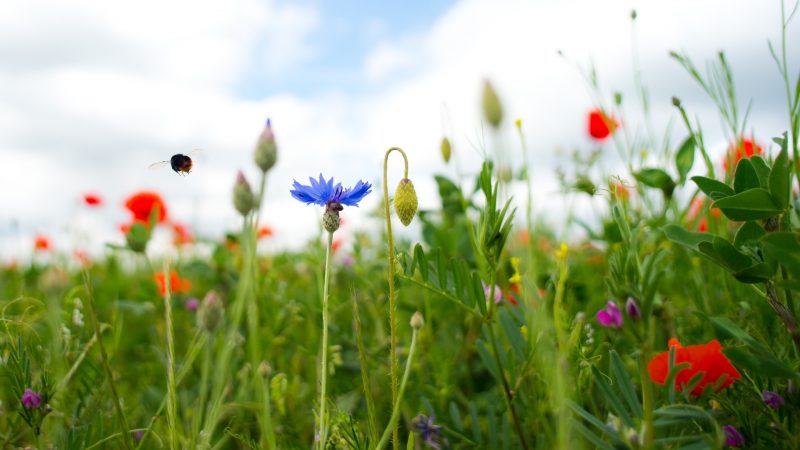
Just about anywhere you find flowering plants, you can find bumblebees and different species make their home in woods, deserts, and forests. They thrive in cooler climates as they adapt to cold weather with their furry bodies and strong wings to keep them warm in flight.
How Do Bumblebees Live Through the Winter?
Only the queen can survive winter. She fills up through the late Summer and Fall, filling a reservoir in her digestion system called a honey stomach to prepare for hibernation.
She then looks for a suitable place to spend the winter, usually underground in a spot protected from direct sunlight (to avoid triggering the end of hibernation early) and away from intense wind and snowfall.
As the weather gets colder, vital functions slow to the point of just keeping the queen alive. When the weather warms, the queen bees come out of hibernation and begin to feed.
More Information About Bumblebees
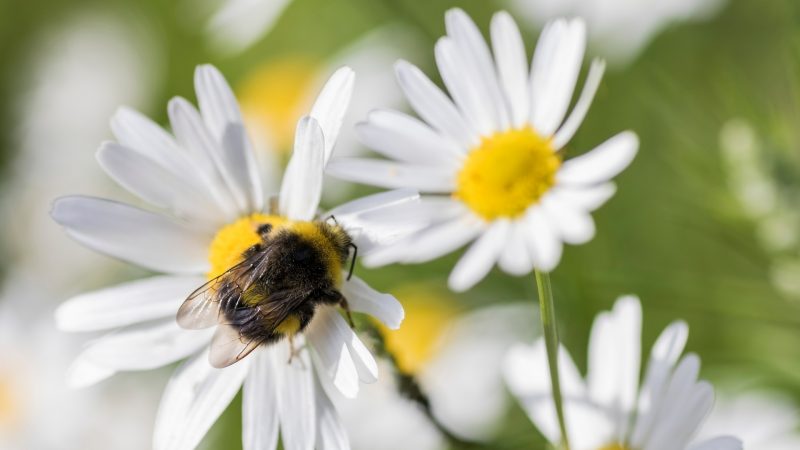
Bumblebees are fascinating creatures, and there is so much to learn about them. For example, did you know that they don’t die after using their sting as honey bees do?
Let’s take a look at some more interesting facts about the humble bumblebee.
Do Bumblebees Typically Live Underground?
As discussed, most bumblebees live underground, though you can find some species that make their homes in leaf litter or under fallen trees on the ground surface. In general, they are seeking out protected areas with protection from the weather and possible attacks.
There are some, like the red-belted bumblebee, that are just as happy underground as above.
Do Bumblebees Live in Walls?
Bumblebees cannot bore into wood or solid structures – they make their homes in pre-made cavities like old animal burrows.
Still, some species, like tree bumblebees, might make a nest in exposed insulation, an open crawl space, or perhaps a large hole in the side of a building.
Bumblebees don’t make excess honey, and the colony dies over the winter, so it’s unlikely that a bumblebee hive would cause structural damage if it takes up residence in a wall.
How Long Can Bumblebees Live Without Food?
Bumblebees are large and heavy. It takes a lot of energy to beat their wings fast enough to fly, and they need to feed often. That being said, you might be amazed to learn that bumblebees can starve to death in as little as 40 minutes without food.
Queens, during hibernation, can live on a full honey stomach for up to nine months, but their body is functioning only enough to survive.
Where Do Bumblebees Live in the World?
Bumblebees live on every continent except Antarctica and are found worldwide in areas with cooler climates and seasonal changes.
The bumblebee is not well adapted to very hot temperatures. In fact, rising temperatures worldwide have driven some species out of areas where they used to thrive. In some areas, like South America and Southeast Asia, bumblebees can only be found in cooler, mountainous regions.
Related: How To Get Rid of Bumblebee, Bumblebee Nests, and Stings?
List of Sources
Michigan Natural Features Inventory. Bombus pensylvanicus (American bumble bee).
Hines, H. (2020) One of the most common North American bumble bee species is actually two species. Penn State College of Agricultural Sciences.
Merchant, M. (2016). Insects in the City – Bumble bees. Texas A&M AgriLife Extension.
Gardner, K., Klass, C., Calderone, N. (2004). Stinging Insects: Bumble Bees. Cornell Cooperative Extension of Oneida County.
Hood, M. (1998). Bumble bees around the home. Clemson University.
- Bed Bug Surge 2025: How to Detect, Prevent, and Safely Eliminate Infestations in Top U.S. Cities - June 18, 2025
- Asian Needle Ants Invade US Homes: 2025 Guide to Identification, Risks, and Effective Control - June 11, 2025
- New World Screwworm Alert: How US Livestock Owners Can Prevent Outbreaks and Protect Herds [Summer 2025 Update] - June 8, 2025
